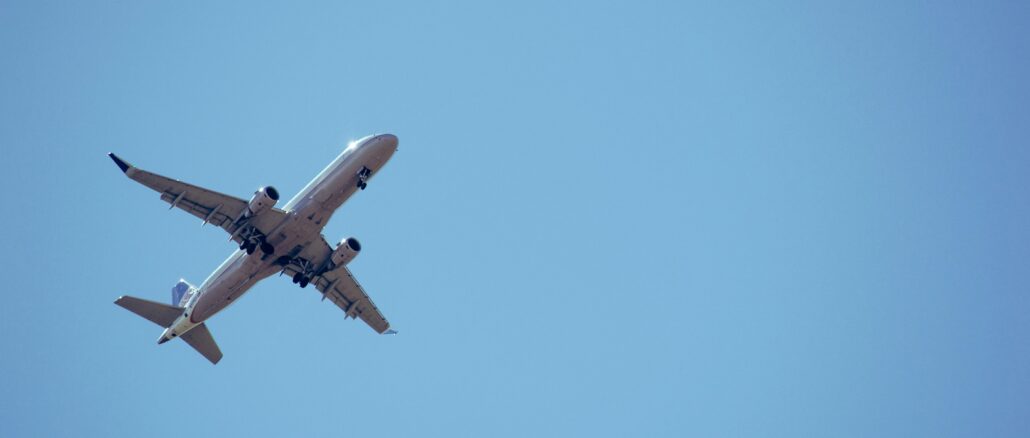
Alliance Air Introduces Affordable Fixed Air Fares to Enhance Connectivity for Tier 2 and Tier 3 Cities Across India
Introduction to ‘Fare se Fursat’
October 15, 2025: Alliance Air, a leading regional airline in India, commenced its new fixed air fare scheme, ‘Fare se Fursat,’ on 13th October 2025, aimed at passengers from Tier 2 and Tier 3 cities. This initiative is designed to make air travel more affordable and accessible for smaller towns, where residents often rely on trains or buses due to cost constraints. As regional connectivity gains importance in India’s evolving aviation landscape, ‘Fare se Fursat’ underscores Alliance Air’s commitment to bridging the urban-rural travel gap.
The scheme’s primary goal is to encourage more passengers to opt for flying by providing a fixed fare structure, eliminating uncertainty and making travel planning easier. Beyond convenience, ‘Fare se Fursat’ aligns with broader economic objectives by stimulating tourism, supporting local businesses, and enhancing connectivity with major urban centers.
Overview of Alliance Air
Operating under the Air India Group, Alliance Air has been a key player in India’s regional aviation sector since 1996. The airline specializes in connecting smaller cities that are often underserved by larger carriers, thus promoting economic growth and mobility in these regions.
Alliance Air operates a fleet of ATR aircraft, optimized for short-haul routes, and actively supports the government’s UDAN (Ude Desh Ka Aam Naagrik) scheme, aimed at improving regional air connectivity.
The airline emphasizes punctuality, reliability, and customer service, ensuring a seamless experience for passengers from booking to arrival. Alliance Air also prioritizes environmental sustainability, adopting eco-friendly practices to reduce aviation’s impact. These factors position the airline as a catalyst for regional travel growth in India.
Details of the ‘Fare se Fursat’ Scheme
The ‘Fare se Fursat’ scheme introduces a fixed air fare structure, offering clarity and affordability in a market dominated by fluctuating ticket prices. Selected domestic routes are covered, making travel planning predictable and budget-friendly.
Key highlights include:
Fixed fare pricing on selected domestic routes.
Target audience: Residents of Tier 2 and Tier 3 cities.
Objective: Enhance regional connectivity and promote affordable travel.
By focusing on smaller airports and underserved routes, Alliance Air aims to make flying a practical option for populations previously deterred by inconsistent pricing. The initiative is expected to encourage other carriers to adopt similar strategies, boosting competition in the regional aviation market.
Testing Phase and Implementation
The ‘Fare se Fursat’ scheme commenced on 13th October 2025, covering carefully selected routes based on travel demand, flight frequency, and regional growth potential.
During this phase, Alliance Air will monitor:
Passenger load factors.
Customer feedback on pricing and travel experience.
Revenue and operational impact for the airline.
Insights gained will guide the potential expansion of the scheme, ensuring a sustainable and scalable model for Tier 2 and Tier 3 cities.
Target Audience and Market Impact
The scheme primarily targets residents of Tier 2 and Tier 3 cities, including young professionals, students, families, and small business owners.
Expected benefits include:
Encouraging more passengers to choose air travel over long-distance road or rail journeys.
Stimulating local economies through tourism and business travel.
Promoting regional development by improving the movement of goods and services.
By offering predictable fares, Alliance Air is supporting socio-economic growth in smaller cities while fostering a culture of accessible air travel.
Partnerships and Stakeholder Involvement
The success of ‘Fare se Fursat’ depends on collaboration with government agencies, airport authorities, and travel partners:
Government partnerships may provide incentives or subsidies, supporting competitive fares.
Airport authorities assist with infrastructure, ground services, and passenger management.
Travel agencies expand outreach and simplify booking for a wider audience.
These collaborations ensure seamless service delivery and maximize the initiative’s impact.
Potential Challenges and Solutions
Implementing ‘Fare se Fursat’ may face challenges such as:
Demand fluctuations – Seasonal travel patterns and competition from other transport modes. Solution: Use predictive analytics to optimize seat occupancy.
Regulatory hurdles – Compliance with varying local aviation policies. Solution: Maintain proactive engagement with regulatory bodies.
Operational constraints – Aircraft availability, crew allocation, and airport infrastructure. Solution: Partner with regional airports and optimize logistics and scheduling.
By anticipating these challenges, Alliance Air can ensure the program’s sustainability and effectiveness.
Customer Reaction and Market Expectations
The scheme has received a positive response from potential passengers. Families and individuals planning leisure trips, in particular, appreciate the predictability of fares.
Industry experts highlight that fixed pricing appeals to cost-conscious travelers in smaller cities, encouraging more frequent air travel. By providing affordable and reliable options, ‘Fare se Fursat’ aligns with growing expectations for regional connectivity and accessible air transport.
Conclusion and Future Outlook
Alliance Air’s ‘Fare se Fursat’ scheme is a major step toward enhancing air travel in Tier 2 and Tier 3 cities. By offering fixed and affordable fares, the initiative allows passengers to plan journeys without financial uncertainty.
The program is expected to stimulate local economies, boost tourism, and support business travel. Its success could inspire other airlines to adopt similar initiatives, fostering competition and benefiting travelers nationwide.
In the long term, ‘Fare se Fursat’ may also encourage infrastructure development and further government support, reshaping the landscape of regional aviation in India. Alliance Air’s initiative is not merely a fare scheme—it is a strategic investment in regional connectivity and economic growth.

